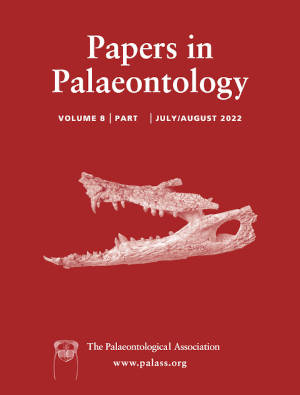Article: Tough to digest: first record of Teleosauroidea (Thalattosuchia) in a regurgitalite from the Upper Jurassic of north-eastern Italy
Publication: Papers in Palaeontology
Volume:
8
Part:
6
Publication Date:
2022
Article number:
e1474
Author(s):
Giovanni Serafini, Caleb M. Gordon, Davide Foffa, Miriam Cobianchi, and Luca Giusberti
DOI:
10.1002/spp2.1474
Abstract
Abstract Postcranial remains of a small teleosauroid from the Upper Jurassic of north-eastern Italy are described in detail. The specimen, discovered in 1980 on a slab of Rosso Ammonitico Veronese (RAV Fm.; Bajocian–Tithonian), is represented by partially articulated thoracic, sacral and anterior caudal vertebrae, fractured and displaced osteoderms and pelvic girdle elements. Additional bone elements overlap one another in a densely packed cluster. The peculiar arrangement of this specimen is here interpreted as the result of regurgitation of the animal carcass from a pelagic predator or scavenger. Microstructural and geochemical evidence from bone and surrounding matrix support this hypothesis. A dearth of phosphorus in the matrix near the bone mass corroborates the interpretation of the specimen as a regurgitalite rather than a coprolite. Calcareous nannofossil and stratigraphic data allow us to assign the fossil to the latest Kimmeridgian or earliest Tithonian. The specimen is here tentatively referred to the teleosauroid subfamily Aeolodontinae based on the alternating pattern of the osteoderm ornamentation; this attribution is supported by stratigraphical and palaeoenvironmental evidence. If confirmed, this represents the first occurrence of Aeolodontinae in Italian outcrops of the western Tethys margin and represents the first marine crocodylomorph described as a bromalite.
